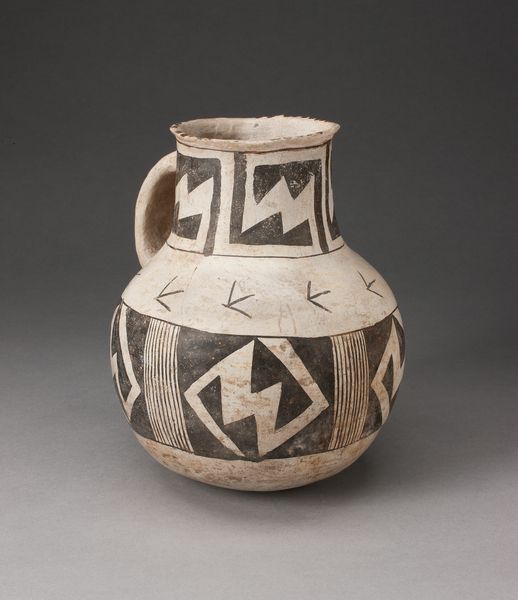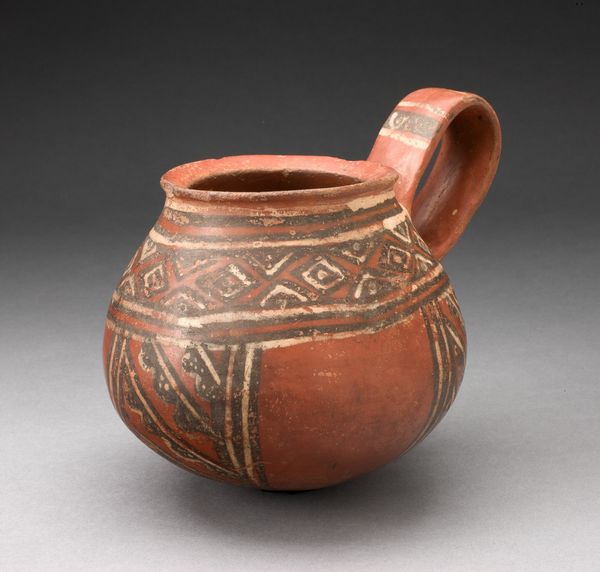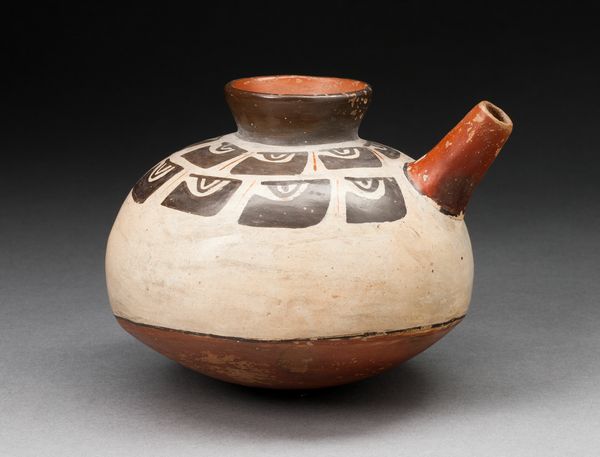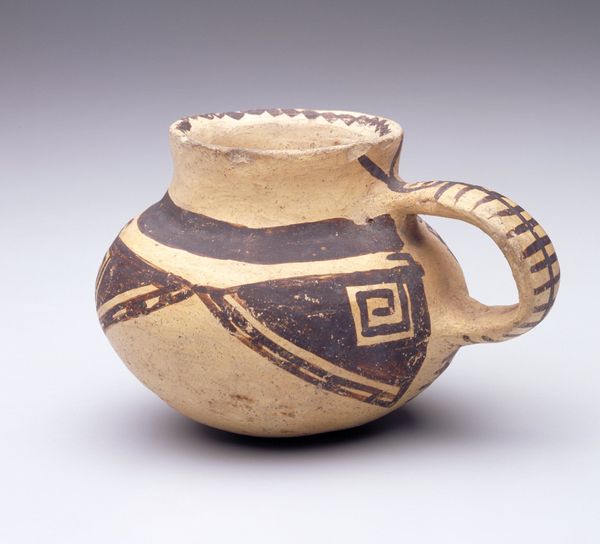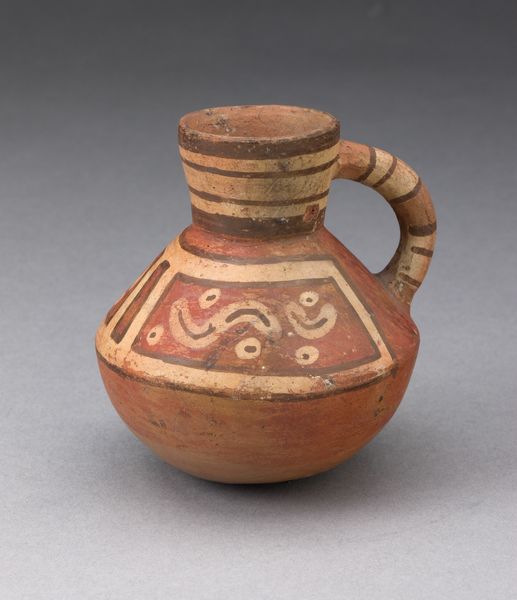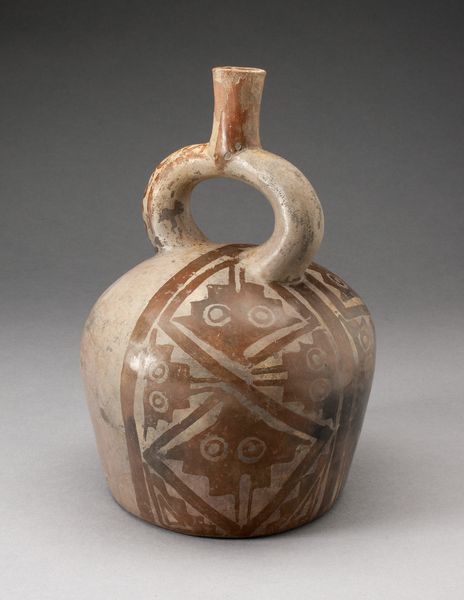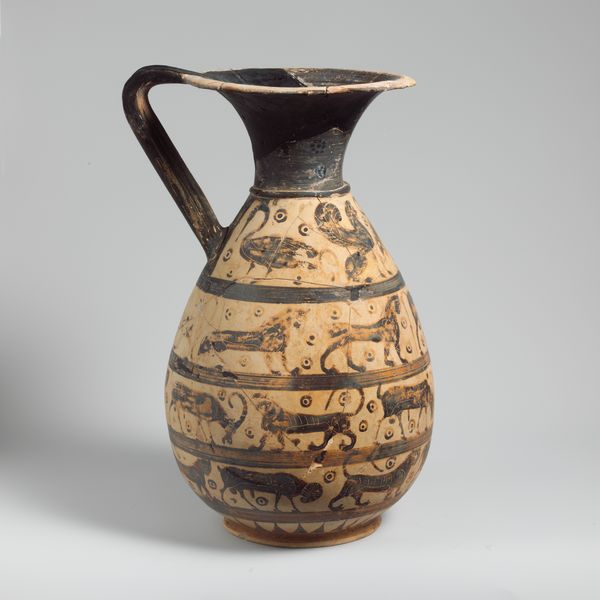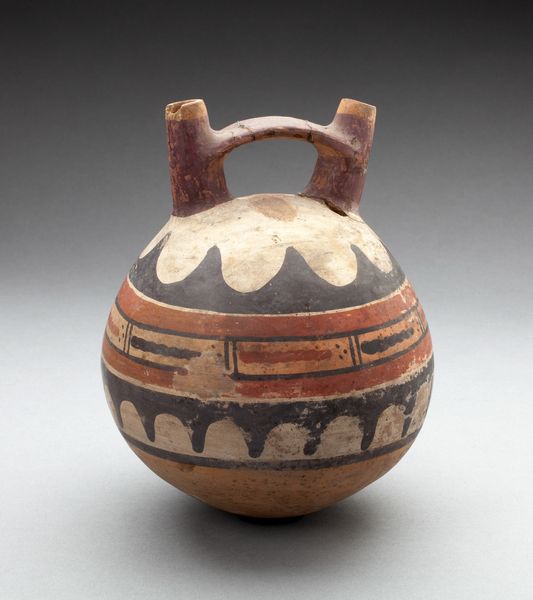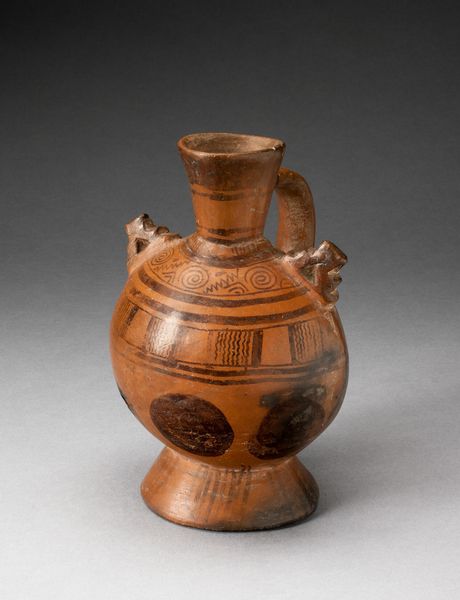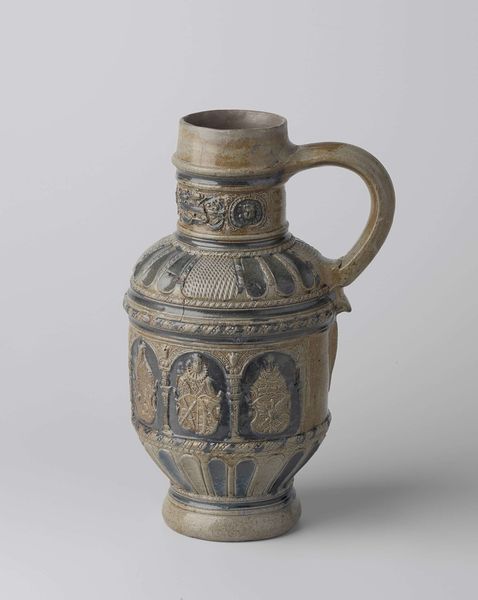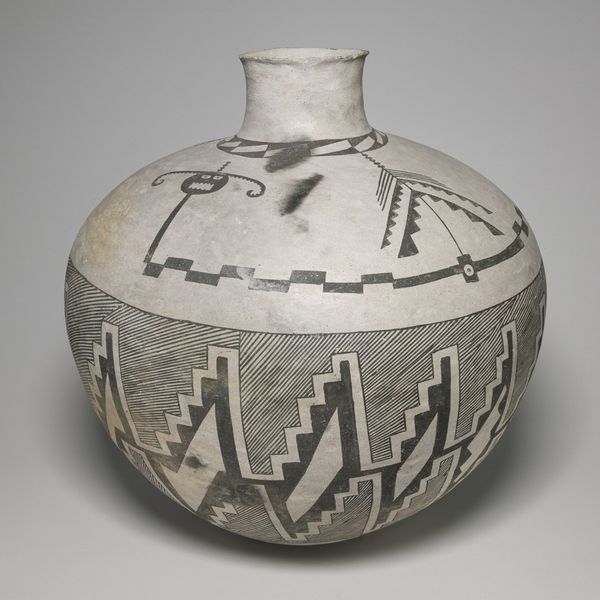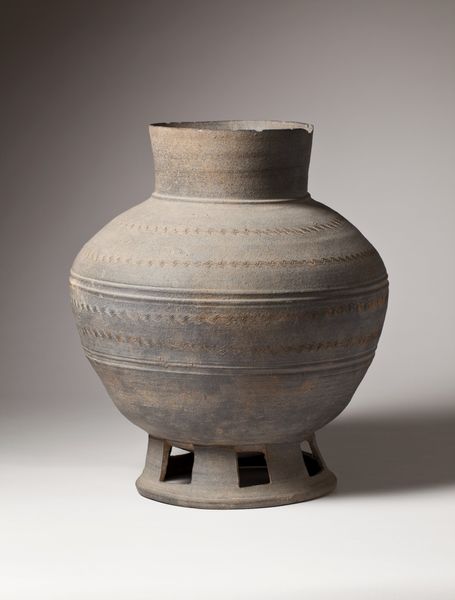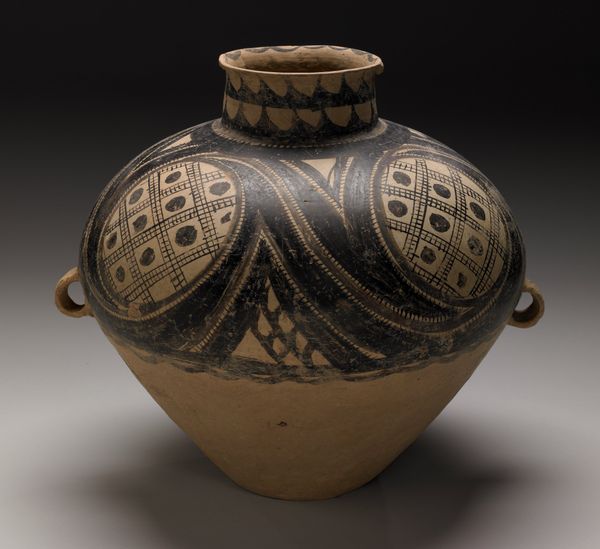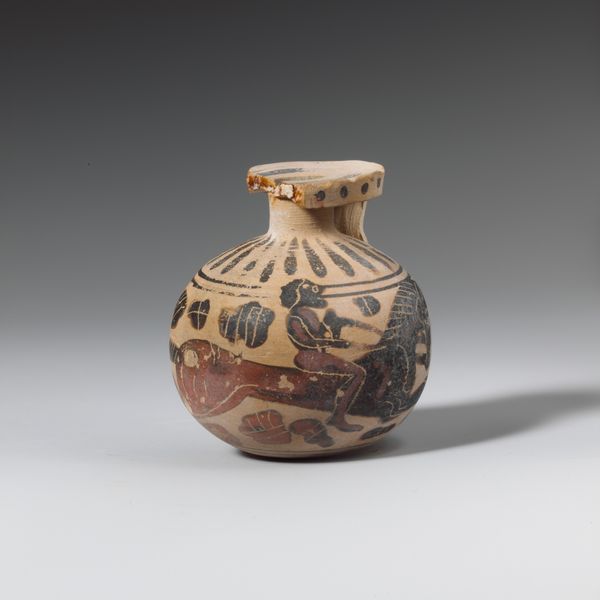
Pitcher with Interlocking Zigzag Motifs and Checkerboard Pattern Possibly 950 - 1400
0:00
0:00
ceramic
#
ceramic
#
geometric
#
ceramic
#
indigenous-americas
Dimensions: H. 17.2 cm (6 3/4 in.)
Copyright: Public Domain
Curator: Let’s take a closer look at this Ancestral Pueblo vessel at The Art Institute of Chicago, titled “Pitcher with Interlocking Zigzag Motifs and Checkerboard Pattern," possibly crafted between 950 and 1400. Editor: It’s instantly striking. The geometric designs in black on the light ceramic surface pop. There’s a definite sense of energy, a controlled dynamism, wouldn’t you say? Curator: Absolutely. The interlocking zigzag patterns definitely convey a sense of movement, perhaps representative of water or lightning—powerful forces of nature that held immense symbolic significance. The checkerboard might evoke fields or cultivated land. Editor: Considering the period, how was it constructed? The form suggests coil-building technique, doesn't it? And I wonder what pigments were available to achieve that striking contrast. Curator: Very likely, yes, coil-building and then smoothing the clay. The black pigment could derive from various mineral sources, perhaps manganese or iron oxides. It is important to understand the pot not only as a useful item but as the physical record of the artist’s community knowledge and relationship to the natural environment. Editor: Fascinating how knowledge becomes material, embodied in everyday items. Thinking about it being made in a time without industrial standardization, the regularity of those zigzags feels incredibly skilled, a testament to practiced handiwork. Was the pitcher specifically utilitarian, or might it have served ritualistic purposes, as well? Curator: Pottery served many functions – domestic use being quite prominent. We cannot completely disregard the symbolism imbedded in the surface decoration to carry greater spiritual weight beyond the vessel’s material function. Its abstraction and pattern seem very much aligned with their broader cosmology. Editor: Looking at the surface again, there are areas that are uneven and perhaps a bit damaged. They tell a story of the pitcher’s past use. It carries its history physically, not just visually, you know? Curator: Indeed. Even in its present form, the pitcher continues to offer us insights. Thank you for shedding new light on this work! Editor: Thanks! These encounters always enrich the way we perceive not only the artifact but its history.
Comments
No comments
Be the first to comment and join the conversation on the ultimate creative platform.
